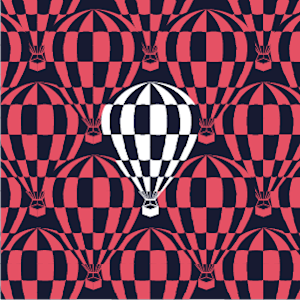Why Visit Now: Rome
Embark on an exploration to the heart of Rome, going beyond well-known sites to discover the essence of its culture and history. Fernwayer shares hidden gems, offers immersions into local traditions, and unveils the stories that shape Rome's allure.
The unparalleled blend of history, art and culture has drawn visitors to Rome for centuries and the allure of the Italian capital's artistic heritage does not seem to slow down. The Covid lockdowns hit Rome hard but created the conditions for the city to rethink its tourism offer.
In 2020 and 2021 the streets of the Eternal City were exceptionally empty for the first time in recent history, but the reduced human traffic allowed for the restoration of important archeological sites and the redevelopment of the iconic museums millions come to visit each year.
Now the city has fully rebounded from the effects of the global pandemic, with a resurgence in cultural events, revitalized tourist attractions, and an enhanced focus on live performances of all kinds, especially during spring and summer months when warm nights allow for shows to be enjoyed under the stars. Here are some of the most awaited events in Rome this year.
1. The City Comes to Life During the Long Estate Romana
It’s always a good time to visit Rome, but summer is when the city comes to life with an endless list of small and large events taking place throughout the city.
Estate Romana is a four-month-long festival beginning on June 15 and running until October 15, offering a mix of cultural events ranging from film screenings, live music gigs, workshops and city tours for both adults and kids.
Enjoy late-night museum openings, art exhibitions in galleries, and literary gatherings hosted by public parks and Renaissance villas. The program for 2024 is yet to be announced — keep an eye on Rome’s tourism board’s official website for updates on the upcoming events.
2. Watch an Opera in Carcalla’s Bath
Summer in Rome means open-air opera and there couldn’t be a better setting for the performances offered by the Teatro dell'Opera di Roma than the incredible Baths of Caracalla, on the southern edge of the historic center.
Once a meeting point for ancient Rome’s elite, the Baths of Caracalla have been repurposed as the backdrop for a rich program of shows that take place between mid-May and August on the occasion of the Festival Di Caracalla.
Up to 50 different shows make up the festival’s summer program, with performances ranging from opera to classical music, jazz concerts and ballet taking place amid the ruins of the thermal bath built between 212 AD and 217 AD by emperors Septimius Severus and Caracalla.
3. Isola del Cinema Draws Film Buffs to Tiberina Island
Positioned between the Trastevere neighborhood and the Jewish Ghetto through the Cestio and the Fabricio bridges, Isola Tiberina is a place of ancient myths and symbolism in the heart of Rome.
The ship-shaped slice of land floating on the Tiber River — one world’s smallest inhabited islands — is home to the Church of San Bartolomeo, built in AD 1000, whose medieval well is believed to pour water with miraculous curative properties.
Besides the legends, Isola Tiberina is the stage for one of the most exciting film festivals happening in Rome in the summer. The island hosts the Isola del Cinema film festival, showcasing the best of Italian and international new cinema in an open-air setting in Spring. Actor and directors are invited to present the premiers of their productions in front of the audience that gathers in the island’s intimate atmosphere to see new short and feature films screened under the stars.
4. Concerto del Primo Maggio, One of Europe’s Largest Free Music Events
For decades tens of thousands of people have gathered in Piazza di San Giovanni in Laterano for one of Europe’s largest free music events on May 1. Rock fans from all over Italy reach Rome on this day to listen to the Concerto del Primo Maggio, the Labor Day Concert. While this is a mostly Italian event, with international artists appearing as guest only occasionally, it is one of the largest cultural events taking place in the city.
In 2024 the concert will change location for the first time, due to renovation works in Piazza di San Giovanni in Laterano — this year’s edition will be held in the iconic setting of Circo Massimo, the ancient Roman circus where emperors hosted horse races and games for the city, now an arena or major festivals and concerts in the heart of the city. The 29th edition of Run Rome The Marathon will be held on March 17, 2024.
5. Join 10,000 Runners for the Rome Marathon
One of the most prestigious events for Italian runners is the Rome Marathon, known as the "Run Rome The Marathon," held in mid-March in the streets of the historic core of the city.
Starting and ending at the Roman Forum, runners pass iconic landmarks such as the Colosseum, Vittoriano, Piazza Venezia, Circus Maximus, Castel Sant’Angelo, St. Peter’s Basilica and many more, covering the distance of 42.195 km to the finish line.
Stay Inspired. Explore the World.
Subscribe to the Wayer Journal and discover a world of inspiring stories and Fernwayer's newest, meticulously crafted private tours.
Over 10,000 people signed up for the last edition of the Rome Marathon, a unique chance to run through the open-air museum that is the Eternal City open to professional athletes and amateurs who follow the itinerary walking instead of running, taking the opportunity to explore the city as its streets are closed to motorized traffic.
6. Musei Capitolini’s New Colossus
Rome’s Capitoline Museums date back to 1471, when Pope Sixtus IV donated a set of precious bronzes to the city, effectively initiating one of the world’s oldest museums. Located right on top of the Campidoglio, one of the seven hills on which Rome was founded, the Capitoline Museums are more than an exhibition of ancient Roman art where one can understand the roots of the Empire — they are a space tributing centuries of art collection practices, showcasing the tastes and political ideas of emperors, popes, and artists.
Besides invaluable works of the permanent collection such as the bronze Capitoline Wolf and the statue of Emperor Marcus Aurelius on horseback, starting in 2024 the museum will exhibit the reconstruction of the 13-meter-tall colossal statue of Constantine I, on display in the garden of Villa Caffarelli from February.
7. Escher is Back in Town
Maurits Cornelis Escher returns to Rome with an exhibition at Palazzo Bonaparte, organized on the occasion of the surrealist artist’s centenary.
Over 300 works will be on show in elegant halls of the 17th-century Palazzo Bonaparte, in Piazza Venezia, ranging from the “impossible” hand-drawn illustrations Escher is famous for to lesser-known lithographs, woodcuts and engravings produced over the course of his lifetime.
The exhibition will trace the evolution of Escher’s style through eight sections dedicated to the various phases of his life that contributed to the surrealist vision of the Dutch artist. A particular focus is given to the twelve years Escher spent in Italy, between 1923 and 1935, studying art history and producing a series of depictions of the city at night.
8. Beyond Soccer: Six Nations & Other Sporting Events
Not just soccer — in 2024, Rome’s Olympic Stadium will become the arena for one of the world’s most awaited rugby tournaments, the Six Nations Championship.
This year’s edition of the sporting event will begin in February, with six teams — Italy, England, Scotland, Wales, Ireland and France — competing for the trophy.
In an atmosphere echoing the games played by ancient gladiators, Rome will host two important matches on February 3 and March 9. In May, the city will also host the 80th edition of the Italian Open (Internazionali d’Italia), one of the most prestigious clay-court tennis tournaments in the world, bringing tennis champions to the Foro Italico. Cycling enthusiasts will also want to be in Rome on May 28, when athletes competing on the last leg of the Giro d'Italia will pass the finish line at the Fori Imperiali.
9. Big Concerts Take Place During Rock in Roma
One of the biggest music festivals in Italy takes place between June and July in Rome. Rock in Roma brings Italian and international superstars to the capital’s Ippodromo delle Capannelle, where up to 30,000 people gather under the stage for a month-long festival dedicated to rock, pop, rap, hip-hop and electronic music.
Artists of the likes of Bruce Springsteen, Radiohead and The Killers have left their mark on previous editions of the festival — the 2024 program is still in development, but bands such as Deep Purple and Fontaines D.C. have already been announced among the leading performances.
10. Shows for Photography Lovers
Rome is not just archeology and ancient myths — much attention will be given to contemporary photography by Rome’s museums in 2024, starting from the show dedicated to the work of German photographer Hilde Lotz, at the Museo di Roma in the Trastevere neighborhood. The exhibition, titled “Hilde in Italia” will showcase approximately 100 previously unpublished images shot during the artist’s residence in Italy between 1934 and 1943. Lotz traveled almost the entire peninsula during this decade, capturing daily rituals and the life of people living under Fascist rule with her portable Leica.
The Museo dell’Ara Pacis will also host an exhibition dedicated to prolific photographer Helmut Newton, whose legacy will be represented by 200 selected iconic portraits that have appeared in some of the world’s largest publications. ||

